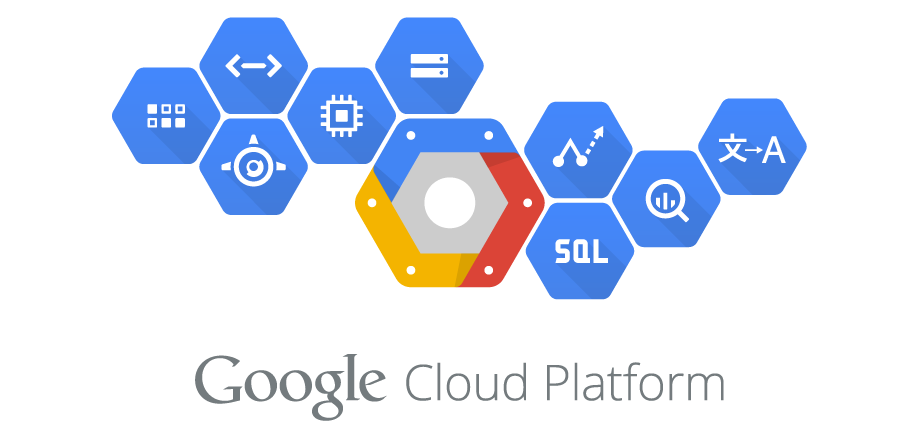CPO200: Google Cloud Platform for Systems Operations Professionals

Next training
By request
Virtual class
Learn how to manage, automate and maintain applications on Google Cloud Platform

Course Description
This 4 day instructor-led class introduces participants to the implementation of application environments and public cloud infrastructure using Google Cloud Platform. Through a combination of instructor-led presentations and hands-on labs, students learn how to deploy cloud infrastructure components such as networks, systems, and applications.
This course is designed to give participants a robust hands-on experience and is primarily lab-focused (approximately 70%).
4 days (32 hours)
This class is intended for:
- Systems Operations professionals and Systems Administrators using Google Cloud Platform to create or migrate application environments and infrastructure
- IT professionals interested in taking the Google Cloud Platform SysOps Professional certification exam
At the end of this one-day course, participants will be able to:
- Understand the core tenants to be considered when designing & deploying to a cloud
- Use the Google Developers Console to create and manage multiple projects
- Use service accounts and permissions to share view-level access between projects
- Create Google Compute Engine instances
- Create a non-default network and review your network configuration
- Compare default and non-default networks
- Create firewall-rules with and without tags
- Create and use a customized Compute Engine image
- Set authorization scopes for a Compute Engine instance
- Reserve an external IP address for an instance
- Snapshot a Compute Engine instance
- Snapshot a data disk
- Create an image using a boot persistent disk
- Upload an image to Google Container Registry
- Create a Compute Engine instance group with instances
- Create a Cloud SQL instance using the Cloud SDK
- Deploy and test a web application
- Add instance and project metadata
- Query instance and project metadata using the Cloud SDK
- Create an instance using a startup script in metadata and Google Cloud Storage
- Create an instance with a shutdown script and install the Cloud Logging agent
- Use the API Explorer to query an API request
- Run sample code that uses the Google API Client Library
- Test and build a container that uses the Cloud SQL APIs
- Create an instance template and managed instance group
- Configure a managed instance group for autoscaling
- Create multiple autoscaled managed instance groups
- Configure fault-tolerant HTTP load balancing
- Test health checks for use with HTTP load balancing
- Manage application deployment using Jinja and Python templates with Google Cloud Deployment Manager
- Delete Google Cloud Platform projects and resources
Before attending this course, participants should have:
- Attend CP100A – Google Cloud Platform Fundamentals (or equivalent experience)
- Basic proficiency with command-line tools and linux operating system environments
- Prior systems operations experience, either on-premises or using a public cloud
- A laptop to run the labs. Laptops may be Mac OS, Windows or Linux
English, Romanian
Instructor-led, Instructor-led online
Vouchers for Google Cloud Platform proctored exams
If you attend to CPO200: Google Cloud Platform for Systems Operations Professionals class you will receive from us the voucher for the Google Certified Systems Operations Professionals proctored exam.
Course Outline
- Module 1
- Module 2
- Module 3
- Module 4
- Module 5
- Module 6
- Module 7
- Module 8
- Module 9
- Module 10
- Module 11
- Module 12
- Module 13
Google Cloud Platform Projects
- Identify project resources and quotas
- Explain the purpose of Google Cloud Resource Manager and Identity and Access Management
Lab: Google Cloud Platform Projects
- Use the Google Developers Console to create and manage multiple projects
- Use service accounts and permissions to share view-level access between projects
Instances
- Explain how to create and move instances
- Identify how to connect to and manage instances
Lab: Google Compute Engine Instances and Machine Types
- Create an instance using the Google Developers Console
- Configure the Cloud SDK on the Compute Engine instance
- Initialize Cloud Source Repositories using Git
Networks
- Explain how to create and manage networks in projects
- Identify how to create and manage firewall rules, routes, and IP addresses
Lab: Google Compute Engine Networks
- Create a non-default network
- Compare default and non-default networks
- Create firewall-rules with and without tags
- Review network configuration in Google Cloud Monitoring
Disks and Images
- Explain how to create and manage persistent disks
- Identify how to create and manage disk images
Lab: Google Compute Engine Disks and Images
- Create an instance and install the Java 7 JRE from OpenJDK
- Create a customized Compute Engine image
- Launch and test a Compute Engine instance based on your image
Authorization
- Explain the purposes of and use cases for Google Compute Engine service accounts
- Identify the types of service account scopes
Lab: Google Compute Engine Authorization
- Set authorization scopes for a Compute Engine instance
- Reserve the external IP address for the new instance
- Install and configure Jenkins on a Compute Engine instance
Snapshots
- Identify the purpose of and use cases for disk snapshots
- Explain the process of creating a snapshot
Lab: Google Compute Engine Snapshots
- Prepare and snapshot a Compute Engine instance
- Restore and test the snapshot to a different zone
- Snapshot a data disk without shutting down an instance
Google Cloud Storage
- Explain the purpose of and use cases for Google Cloud Storage
- Identify methods for accessing Google Cloud Storage buckets and objects
- Explain the security options available for Google Cloud Storage buckets and objects
Lab: Google Cloud Storage for Backups
- Create and configure Nearline and DRA buckets
- Modify the lifecycle management policy for a bucket
- Copy data to a bucket using the Cloud SDK
- Review, modify, and test bucket ACLs
- Configure Jenkins to perform a backup to Cloud Storage
- Test and verify that the backups are working
Lab: Google Cloud Storage for Backups
- Create a customized Jenkins build node instance
- Create an image using the instance’s boot persistent disk
- Create a test build node instance based on the new image
- Test uploading images to Google Container Registry
Instance Groups
- Identify the purpose of and use cases for instance groups
- Explain the process of creating and using instance groups
Lab: Google Compute Engine Instance Groups
- Create a Compute Engine instance group with instances
- Define Jenkins build tasks and run them
- Run the build tasks to create a guestbook image
Google Cloud SQL
- Understand how to create and administer Cloud SQL instances
- Explain how to access Cloud SQL instances from Compute Engine instances
Lab: Google Cloud SQL
- Create a Cloud SQL instance using the Cloud SDK
- Create a Compute Engine instance from a custom image
- Deploy and test the Guestbook web application
Metadata
- Explain the purpose of metadata and identify the use cases for project and instance metadata
- Identify how to set and query metadata
Lab: Google Compute Engine Metadata
- Add instance and project metadata
- Query instance and project metadata using the Cloud SDK
- Query metadata from inside a Compute Engine instance
Startup and Shutdown Scripts
- Identify the purpose of and use cases for startup and shutdown scripts
Lab: Google Compute Engine Startup Scripts
- Create an instance with a startup script in metadata
- Create an instance with a startup script from Cloud Storage
- Create an instance with a shutdown script and install the Cloud Logging agent
Lab: Google API Client Library
- Use the API Explorer to query an API request
- Run sample code that uses the Google API Client Library
- Test and build a container that uses the Cloud SQL APIs
- Create a new Compute Engine image
Autoscaling
- Explain the use cases for autoscaling and how autoscaling functions
- Identify the purpose of autoscaling policies
Lab: Google Compute Engine Autoscaler
- Create an instance template and managed instance group
- Configure the managed instance group for autoscaling
- Generate an artificial load to trigger scaling of your cluster
Load Balancing
- Explain the differences between network load balancing and HTTP load balancing
- Identify the purpose of and use cases for cross-region and content-based load balancing
Lab: HTTP/HTTPS Load Balancing
- Create multiple autoscaled managed instance groups
- Configure fault-tolerant HTTP load balancing
- Test health checks for use with HTTP load balancing
Lab: Google Cloud Deployment Manager
- Create a Guestbook deployment using a plain YAML format
- Manage a Guestbook deployment using a Jinja template
- Create a Guestbook deployment using Python templates
Lab: Deleting Cloud Platform Projects and Resources
- Delete Google Cloud Platform resources
- Test dependencies between resources
- Delete Google Cloud Platform projects
Please note that this is preliminary information which might be subject to change.
Learn more about related courses
About the trainer

Bogdan Nourescu
Google Cloud Platform Authorized Trainer | Web Development
Bogdan Nourescu is Atlas Networking Cloud trainer and the only Google Cloud Platform Authorized Trainer from Romania. Senior Web App Developer with 5+ years expertise in designing highly scalable apps, Bogdan has been working with Google Cloud Platform since the beginning of his career, as well with with technologies like JQuery, Polymer, App Engine, Compute Engine, Cloud Storage, in order to develop apps for different industries.
As a trainer, Bogdan is focused on teaching developers and other IT specialists why Cloud is the way to go and how to use it to achieve maximum potential. He is also passionate about exploring new technologies, and always curious to find solutions to integrate them into existing or new projects.
Starting February 2016, Bogdan is delivering a Web Development class within The Informal School of IT – Bucharest.

